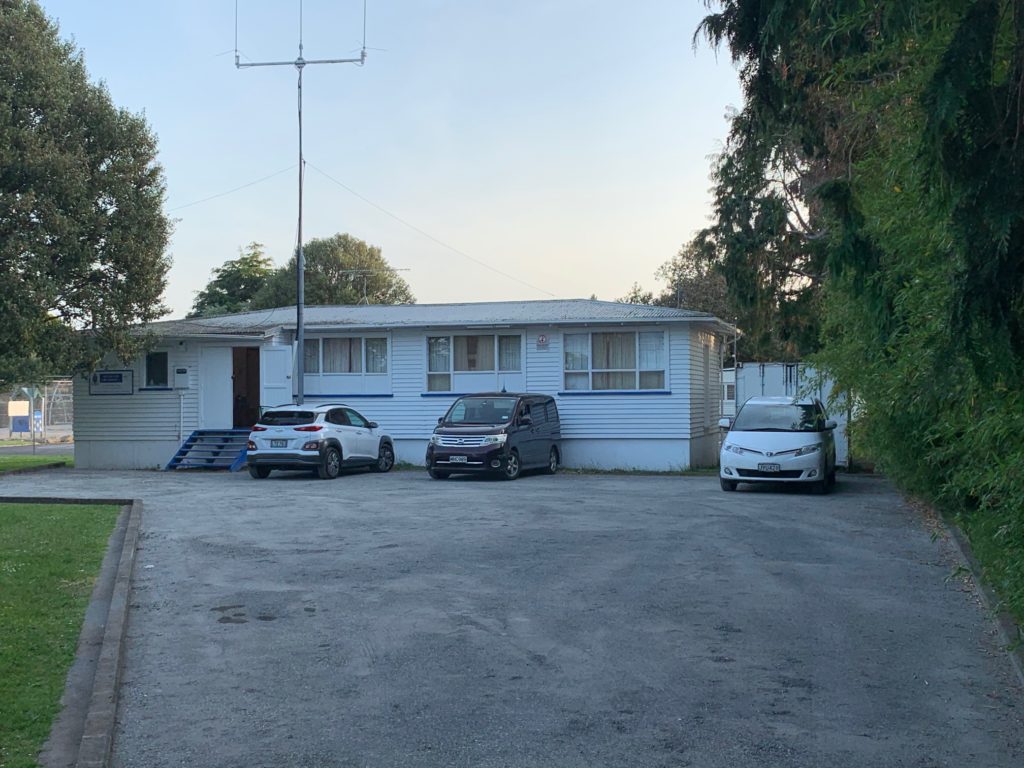
A brief history of the Auckland VHF Group
The Auckland VHF Group was formed in July 1956 to foster interest in the VHF and higher radio frequencies in the Auckland area. The aim was to encourage the construction of radio equipment for these frequencies. It was registered as Incorporated Society 221980 in March 1966. It became affiliated to the national organization as Branch 66 in 1968.
It was the first special interest group of this type in New Zealand. It promoted gatherings for discussion of the experimenting done by its members and produced a newsletter with a circulation of over 200 copies covering all of New Zealand and amateurs1 in Australia who heard of these activities which spread by word of mouth. Equipment for these frequencies was initially home built. Commercial suppliers were not available in New Zealand. Conversion to amateur use for surplus equipment was quite common with the newsletter describing what to do.
The club’s primary focus is on promoting use of the amateur radio spectrum in the Very High Frequency 30 – 300 MHz (VHF), Ultra High Frequency 300 – 3000 MHz (UHF) and Super High Frequency 3 – 30 GHz (SHF). To this end, a number of our members are active in pursuing long distance communications on radio frequencies which are traditionally regarded as line-of-sight propagation paths.
The general meetings of the club take place in the clubrooms in the Arthur Faulkner Reserve. A program of speakers on radio topics is provided here once a month for the members to learn about aspects of radio and electronics that they may not be familiar with. Occasional activities
are provided for members to get together at the clubrooms to test and measure the fruits of their labour.
Dates are set out during the year to encourage radio communication in the form of contests. The club is represented every year with a team of members operating on as many frequencies for which the members have the equipment to provide contacts with other amateurs around the country. This usually involves traveling outside the city to high spots where there is less
background radio noise than in the city.
The club has hosted Technology Conventions in Auckland where a program of speakers is arranged to talk about their recent experimental work to an audience of 40 – 60 attendees.
Historically, members of our club have been very active in the area of radio propagation research, working with the late Professor Harry Whale of Auckland University at the Seagrove and Ardmore Radio Research centres on long distance radio communications and the ionospheric physics associated with long distance communications. In particular, our members assisted with the design and testing of antenna systems. With the arrival of satellite communications, this work declined. Today, the club maintains links to Auckland University and the radio research work being done in areas of cell phone propagation and radio astronomy.
Within the Auckland Council area, the club owns and operates radio repeater systems at sites on the Waitakere ranges and Bombay hills with other important sites at Port Waikato and the Brynderwyn Hills. These radio repeater systems are open and free for all radio amateurs in the
geographic area. The maintenance of these systems is carried out by volunteer labour of the club members supported by donations from other radio clubs in the Auckland area. It requires additional fund raising activities to support these assets and keep them up to date. The club attends market days and sells surplus equipment it has obtained to other amateurs as part of its fund raising.
The club encourages the use of new technology in radio communications and is at the forefront in the use of digital radio communications – providing repeater systems for members to experiment with digital communications modes, in particular D-Star and DMR (digital mobile radio). A DMR site has been established recently to provide experience of its effectiveness to Auckland users. There is a special interest group within the club for amateur television although licenses for this have recently been withdrawn. Recently a group interested in the conversion of commercial data link equipment to amateur frequencies has begun. In particular, the development of a high speed data mesh network is being planned. It will also be able to transport digital TV which is another form of data communication.
The Amateur Radio operators are spread throughout the community. This gives resilience in times of emergency as there will always be radio operators living in areas which are not immediately affected. The New Zealand amateur radio licence refers specifically to Article 25 of the International Radio Regulations where Amateur operators are encouraged to prepare for
and meet communication needs in support of disaster relief. In the Auckland Region this takes the form of involvement with Civil Defence by providing operators for communication centres and making the clubrooms available as a backup centre if required.
Currently club member Stephen Hayman holds many distance records within New Zealand on the VHF-SHF bands, member Murray Woodfield has the record for the longest distance contact on VHF between New Zealand and Australia. Other members hold distance records for contacts between New Zealand and Australia on the UHF bands. Of note is the world record held by club member Greg Storz for bouncing a signal off the moon on SHF (10GHz) and making contact with a radio amateur in Germany – a distance of 18,340 km! Another amateur Simon Watt-Wyness recently set a new record for distance to Australia at UHF (1296 MHz).
This is a summary of the major activities of the Auckland VHF Group which shows that it provides a useful contribution to the amateur radio community.
Peter Loveridge President Auckland VHF Group, Inc.
11 December 2015
